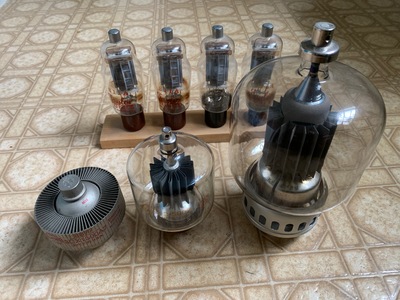My old Virbroplex Morse code key. I thought I sold that years ago.
If you have no emotional attachment to it, those things are valuable to collectors. I have a few left around I was considering selling, but never got around to it. I think they will fetch $200-$400 each or more depending on the condition and age. You can find out the year of manufacture via the serial number. I think they first were made in the 1920s. The Vibroplex company passed through several owners, and you could still buy new ones as of 4-5 years ago. Anything that pre-dates 1980 or so might have collector value.
I just looked it up. It appears to be vintage 1964. Serial number is 239715.
I believe my uncle most likely purchased it new. When he died my aunt gave it to me. So it does have some personal meaning for me. But if I could obtain $400 I could be unattached to it real quick. ?
I knew they were worth something. I saw similar keys going on eBay for between $100 to $200 some years ago and almost put it up on eBay myself at that time. In fact, I actually thought that I had done that. So I was pleasantly surprised to find it in the attic.
These are of course designed for high speed CW. As you can see in the photo I had the speed weight as far extended as it would go. And it was still pretty fast. I don't think this thing will go down to 5 wpm.
It is true that I'll most likely never put this thing to any actual use. I probably should put it up on eBay and use the money to buy a Jetson Nano and a LIDAR unit. ? I built a nice glass case for it using those leaded strips they use for stain glass windows. So it has a nice handmade display case and everything.

I confess that I do hate to part with it. But what the heck. I actually had parted with it for decades as it sat in the attic and that didn't seem to bother me. I even thought I had already sold it. Besides it won't be much longer before I'll be parting with everything. So what's the point in trying to hang onto everything?
Anyone interested? I'll swap it for a Jetson Nano with a LIDAR unit. I guess that's about $150?
Jetson Nano = $99 + Mini Lidar = $50
I'll bet I can get at least $150 out of this on eBay. Maybe more if I put it up as an auction with a "Buy It Now" set at $400 and an opening minimum bid of $150.
It would be nice to be able to turn it into a Jetson Nano and a mini LIDAR unit. It would be even nicer to turn it into a Jetson Nano and a full 360 degree LIDAR unit. So off to eBay I go,....
DroneBot Workshop Robotics Engineer
James
It would also be nice to be able to hear my own transmitters so I can get an idea of what the signals actually sound like.
You could take a look at Software Defined Radio (SDR) for the meantime. It's a pretty low-cost way of receiving radio signals on a very large spectrum of frequencies and with a bit of antenna tweaking quite a useful tool.
Better than those handheld scanners that used to be popular. I used SDR to capture the .wav file that I posted.
You mentioned in an earlier post about possibly transmitting a captured .gif file from your robot to base. Sorry to disappoint but, I think I read somewhere that 433MHz modules could only transmit a restricted number of bytes. Therefore you would have to string a load of short transmissions together to achieve what you want to do.
You could take a look at Software Defined Radio (SDR) for the meantime. It's a pretty low-cost way of receiving radio signals on a very large spectrum of frequencies and with a bit of antenna tweaking quite a useful tool.
I never heard of the SDR. I'll have to look into that. However I was just thinking that I already have a bunch of these 433Mhz receivers. Is there any way I can set one of those up to output an audio signal of what it's receiving? That would actually be best. Then I could experiment with getting the best reception on that module. Having a good transmitter is only half of the RF link. Having a good receiver is equally important.
You mentioned in an earlier post about possibly transmitting a captured .gif file from your robot to base. Sorry to disappoint but, I think I read somewhere that 433MHz modules could only transmit a restricted number of bytes. Therefore you would have to string a load of short transmissions together to achieve what you want to do.
I really don't need the graphics. So it's not a major disappointment. I just thought it might be cool if that could be done. I was thinking of extremely limited graphics. I suggested a .gif file. But what might actually be better would be to just send some line end-points and have the receiving computer recreate a line drawing. All I'm really looking for are enough lines to see major structures. Or maybe a very crude outline of a person or animal. This would probably be generated in the robot via LIDAR. And then I would have the robot just send me the major lines of the drawing. That could end up being as little as a few hundred bytes or even possibly less. I'll need to study exactly what the data limitations are of these 433Mhz modules. I know they are quite limited. But exactly how limited they are I don't know.
DroneBot Workshop Robotics Engineer
James
Here's a really nice video explaining precisely how these 433Mhz modules work.
To hear the output signal all I'll need to do is amply the output bits and send them to a speaker. I believe he said that his library sends 2000 bits per second. That would be 2khz. I should be able to hear that.
DroneBot Workshop Robotics Engineer
James
I found this kit on Banggood for $20.
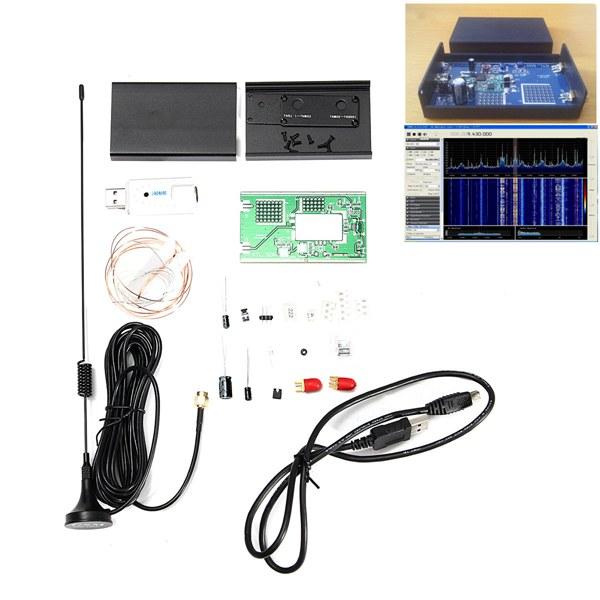
100KHz-1.7GHz Full-Band Software Radio HF FM AM RTL-SDR Receiver Radio Frequency Modulation Kit
Looks like a nightmare to build which might be a fun project. ?
DroneBot Workshop Robotics Engineer
James
I can only squeak in a little bit of work on each project everyday. Today I took the cover off the Signal Generator and cleaned it up. I plugged it in the the tube filaments lit up along with two illumination light bulbs for the scales. I don't have a cable to actually test it yet. I'm sure these old cables are around here somewhere.
This has 3 vacuum tubes in it. And a large red cardboard capacitor. I probably should swap that cap out for a new one. This baby will probably explode like a cherry bomb because it's so ancient.
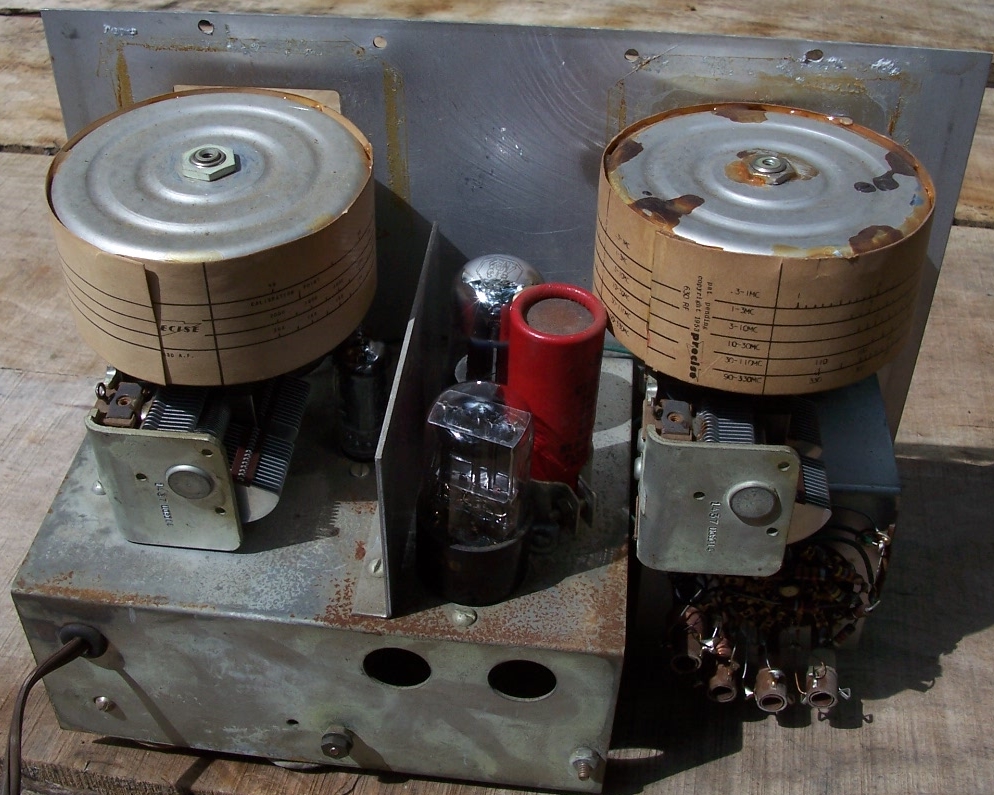
Here's the underside of the chassis with all the rotary switches. I cleaned these rotary switches really good with WD40 Contact Cleaner. So hopefully they'll make good electrical connections and not be intermittent.
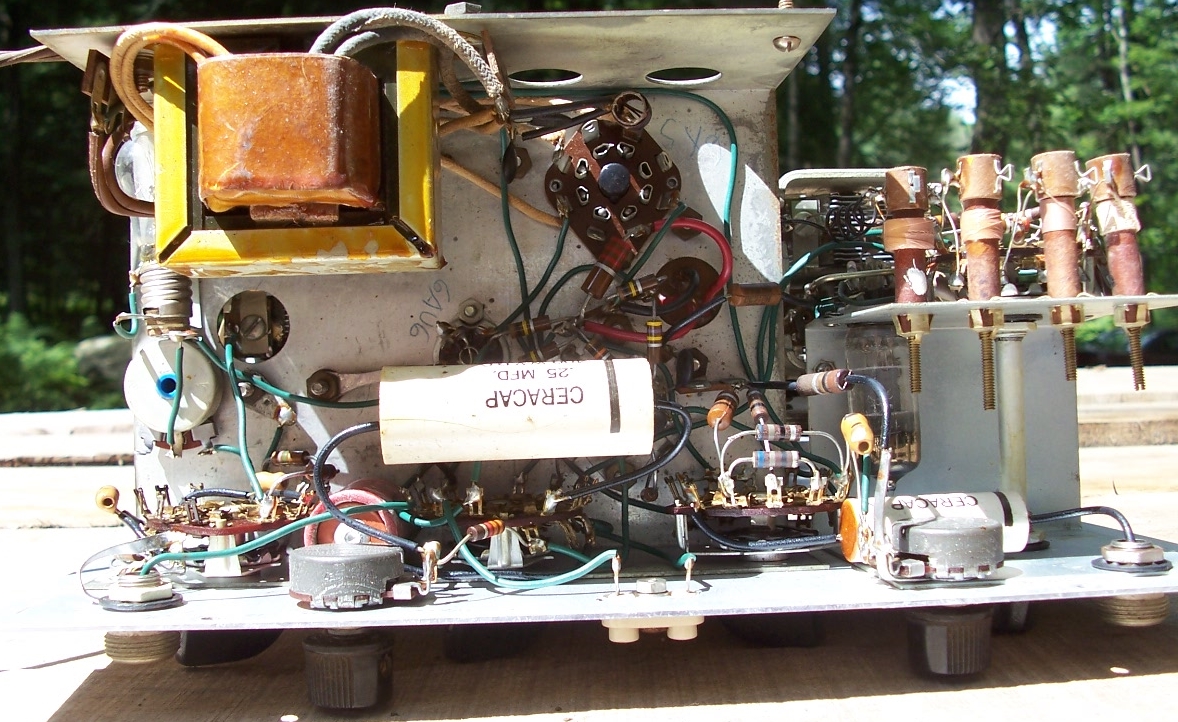
That's all I can do on it today. I put it back in the case and see if I can find the cables for it. They are old-fashioned screw-on type connectors. If I can't find them I'll have to make up some way to connect an output cable to them.
So anyway, it should be ready to play with. The tubes are all lighting up and no caps have exploded yet so we'll see what happens.
By the way, for those who think this might be a waste of time when something far more modern can be had fairly inexpensively, keep in mind that I'm an antique buff. So for me, this is more than just about the RF -AF generator. It's about restoring an antique. ?
Although if I get it working we all know the first thing I'll be trying to generate is a 433Mhz carrier to see if my receiver modules will detect it. If I'm reading the scales and ranges on this generator correctly 433Mhz is should be within the range of this baby.
DroneBot Workshop Robotics Engineer
James
I found this kit on Banggood for $20.
100KHz-1.7GHz Full-Band Software Radio HF FM AM RTL-SDR Receiver Radio Frequency Modulation Kit
Looks like a nightmare to build which might be a fun project. ?
James, I read somewhere on the net that there was a general warning about these $20 kits being sub-standard. But if you are prepared to bin $20, after spending a few hours putting it together.
That is why I went to a recognised brand. I had problems with the screw thread on one of the antennas and NooELEC replaced the antenna, with only a few technical questions about the problems I was having. The replacement arrived within a week.
You only need the $40 dongle to monitor most digital frequencies.
These are of course designed for high speed CW. As you can see in the photo I had the speed weight as far extended as it would go. And it was still pretty fast. I don't think this thing will go down to 5 wpm.
</brag> In my prime, I could send and receive 40 WPM with an iambic keyer on TX and my ear for RX. Only could TX about 20 WPM with a bug like you pictured, and I made a lot of mistakes with it. <brag/>
You could tell certain operators by the sound of their keying. Bugs jumped out because the dash-dot ratio was not 3:1 always. Same with straight keys. Depending on the operator, anywhere from 2:1 to 4:1, and some sent certain letters different speeds. Almost like an accent. Iambic keyers had two paddles driving an IC and usually were perfect 3:1 ratio. Some operators used keyboards driving keying circuits. The Old Timers frowned on that, contending they weren't "real" Hams. I didn't care how they generated the CW as long as I could copy it.
Another Update on the 433Mhz project. Tonight I built an audio amplifier using a 741 op amp and some transistors. Then I connected that up to one of the 433Mhz receiver modules. I was surprised to have it work the first time I turned it on. I could hear the static hiss of a radio receiver coming from the speaker. But no activity. Well, I live in a rural area so it may simply be that no one is using this frequency around here.
In any case, I then turned on my transmitter breadboard which is programmed to send a short message every couple seconds. Much to my surprise when the transmitted transmitted the static hiss disappeared and the receiver was totally quiet for about a 1/10 of a second and then I heard a very clear and loud BRDRDRDRDRDRDRDRDRDRIP! (a clear digital signal). Then another short piece of silence and finally, back to the the hiss when the transmitter turned off.
So apparently it's working perfectly. Now I can listen to my RF projects and hear what the signals actually sound like. This will be nice because when I test for range if I can still hear a strong signal when the digital message is no longer being detected that will tell me that it might just be that the digital signal is deteriorating and needs to be cleaned up more. So I really wanted to have this audio receiver so I can listen to what's going on while I'm doing all these tests. I plan on beefing up this audio amplifier as well. I used a 741 op amp because that's all I had on hand. But I just ordered some 386 op amps that might be better for a second stage before the speaker driver transistors.
Electronics is fun. Even though I've been doing this for years, it's still fun. And really cool and it works.
Here's a picture of the breadboard mess. The new audio receiver amp is on the top most breadboard. The breadboard with the green LED's is the transceiver board.
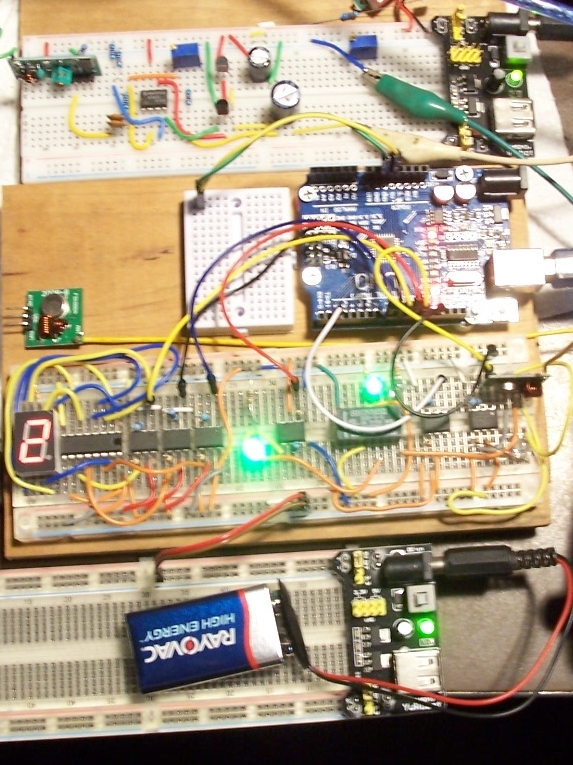
I've actually been thinking about reducing the transceiver board to fit on an Arduino shield using SMD component and KiCAD.
Now that I can hear the transmitted signal I can do better range tests by just listening to the signal. I figure that if I can hear it well enough to recognize it as a digital burst, I should be able to build circuits that can amplify it and clean it up well enough to be digitally read by the Arduino. I might need to do some fancy signal amplification and reconditioning to clean up the digital pulses.
This is a fun project.
DroneBot Workshop Robotics Engineer
James
My Own Private Frequency:
I've been listening to my 433Mhz audio radio receiver for a few days now and all I hear is a constant clean hiss coming from the speaker. I know it's working because when I transmit data on the transmit module I can hear that digital data come in loud and clear. So thus far this appears to be telling me that the 433Mhz frequency is pretty much open for business in my rural area. This is another reason why I wanted to build an audio receiver. I wanted to hear what other signals I might need to compete with. But thus far, there hasn't been so much as a bleep out of it.
Question for the Hams:
I was thinking of hooking up a Morris code key to the transmitter and sending out CQ CQ CQ,... to see if I could get a reply. But then I wondered about the legality of this? Is it permissible to send out a CW CQ call without a license when using only 100 mW of power? I wouldn't have a call sign. And I'd probably need to explain myself to any Hams that might reply. ?
And that would be a difficult communication considering I don't really know how to read incoming Morris Code. Although I was thinking of writing up an Arduino sketch to read the code and convert it into letters. In fact, I was thinking of doing this anyway. I thought it might be fun to go in the other room and send a Morris Code message to the Arduino and then come back and look to see if it deciphered it correctly. ?
I realize the timing would no doubt be pretty tricky. But since I'm both writing the sketch and sending the code I could probably get down a timing scheme that would work for me. In fact, that shouldn't be too difficult because I could also have the Arduino send me code at the precise speed that it wants to receive it. That way I could get into the "groove". I'm slightly musical. It could work in theory. I could even use a metronome when sending the code if needed. ?
I'm getting "Ham Fever" just listening to a blank carrier frequency hissing at me.
DroneBot Workshop Robotics Engineer
James
Since that band and power level are for non licensed use I can't see any hinderance to transmitting CQ out onto the airwaves! But doubt you'd ever get a response. In fact it might make a great project as you mention to work out your own CW decoder by listening to what your transmitter is sending and writing the code to translate what the receiver hears.
And when you get to working on the timing, here is a site that has some information about that: NuMorse
Good luck!
SteveG

